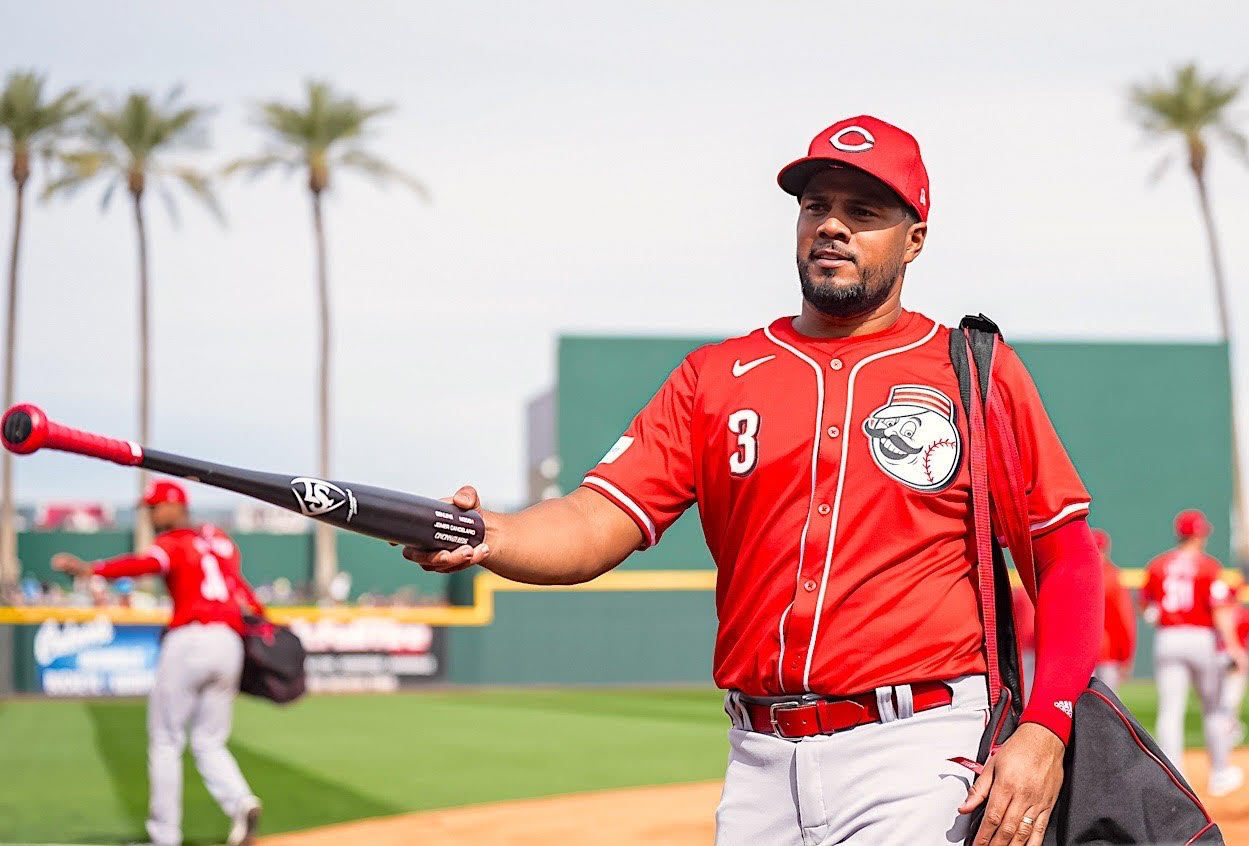
After the surprise success of the 2023 season, Reds fans were excited to see how Nick Krall would improve the team to take them to the next level and hopefully a playoff appearance. Most fans, although not all, held the sentiment that the greatest areas of need were starting pitching, bullpen depth and corner outfielders. The Queen City was then shocked when the Reds signed infielder Jeimer Candelario to a three-year contract with a club option for 2027.
By all accounts, Candelario had a very successful 2023 season, generating 3.3 fWAR and a wRC+ of 117. His traditional metrics looked solid, as well, generating a slash line of .251/.336/.471 with 22 home runs and 70 RBIs. In the small confines of Great American Ball Park, it’s possible he could outperform his production in 2024.
So, what is a reasonable expectation for Candelario this upcoming season?
Offensive Value
It’s worth noting that, while Candelario was very productive last year, he has not been a consistently productive player year over year.

Excluding 2016 and 2017, in which he played for a combined 43 games, Candelario’s fWAR has been all over the place. He’s had very productive years, such as 2021 (3.8 fWAR) and 2023 (3.3 fWAR), but he has also had disappointing years, even recently. In 2022, over 124 games, he generated a -0.1 fWAR, meaning he performed at below replacement value for the year. He did struggle with injuries to his left shoulder that year, which helps explain the drop in performance. In 2019, which saw a similar dip in performance, Candelario missed playing time due to left shoulder inflammation.
The ups and downs of Candelario’s performance is reflected in his average exit velocity year over year. For context, average exit velocity for MLB is about 89 MPH. Outside of 2016 — which is far too small a sample size to take very seriously — Candelario has consistently at or just below the MLB average. Even in his strong 2023 season, Statcast ranked him in the 44th percentile for exit velocity.

While the up and down performance trend continues when looking at Candelario’s handedness splits, there is a positive in that, while healthy, he has demonstrated the ability to hit both right-handed (career 99 wRC+) and left-handed pitching (110 wRC+). Assuming a healthy season, David Bell should have a solid weapon to slot into the everyday lineup at first base, third base or designated hitter.

One of the selling points for signing with the Reds is the ballpark factor. In the small confines of GABP, some fly balls that would have been caught for outs can now sail into the seats as a souvenir for a fan and points for the team. According to Statcast, based on his 2023 production, he would have hit 30 home runs playing every game in Cincinnati. That’s great news for Reds fans, but it’s worth noting that this would be a career high for him, with his 2021 performance falling in at a close second with 27 home runs.
It’s also important to compare Candelario against other players at the same position as him. With Noelvi Marte set to miss the first 80 games of the season, it’s safe to assume Candelario will play a fair amount of time at third base. It’s also likely that he’ll play a few at first base, too.
Look at this chart below, comparing Candelario to his peers.

When looking at his strong 2023 season, Jeimer Candelario is just at (or slightly below) the average for three out of the four stats measured here. The only statistic where he outperforms the average is his slugging percentage. His xSLG suggests some negative regression may occur here, but it’s also possible that the small confines of Great American Ball Park will allow him to continue to outperform his expected metrics.
It’s also worth noting that most projection systems are expecting him to perform at an above-average level. FanGraphs Depth Charts projects him to generate a slash line of .255/.332/.455 with a wRC+ of 107. ZiPS is even more optimistic, projecting .260/.338/.471 with a wRC+ of 113. Both of these systems suggest that he will not perform at quite the same level as 2023, but they both suggest that he will be an above-average contributor at the plate.
However you look at him, he’s got some pop in his bat, and assuming he is healthy, should have a productive offensive year at the plate in 2024.
Defensive Value
On the defensive side of the field, metrics rank Candelario roughly average. For the 2023 season, his overall fielding run value was in the 53rd percentile. This was driven primarily by his fielding range (66th percentile) and hindered by his arm strength (22nd percentile). Similarly to his offensive production, in the years where he was hampered by injuries, his defensive value suffered. In 2022, his fielding value was in the 19th percentile. However, the year before that, it was just a tick below average.
Statcast ranks Candelario as slightly above-average for his career (6 OAA) at third base and slightly below average at first base (-1 OAA). Notably, he has far more experience at third base (5,421 innings) than first base (664 innings). Defensive runs saved (DRS) ranks him as below average (career -11 DRS) at third base and above average at first (2 DRS).
Conclusion
So, what do the Reds have in Jeimer Candelario? Assuming health, he’s a decent player, with above-average performance at the plate and average production in the field. Despite some durability concerns, there is little doubt that Candelario should play well for the Reds. He initially looked like an odd acquisition in a crowded lineup, but he also allows David Bell greater flexibility and depth for infield roster construction — which is already coming in handy with the injuries around the infield.
Featured Photo: Reds Facebook


